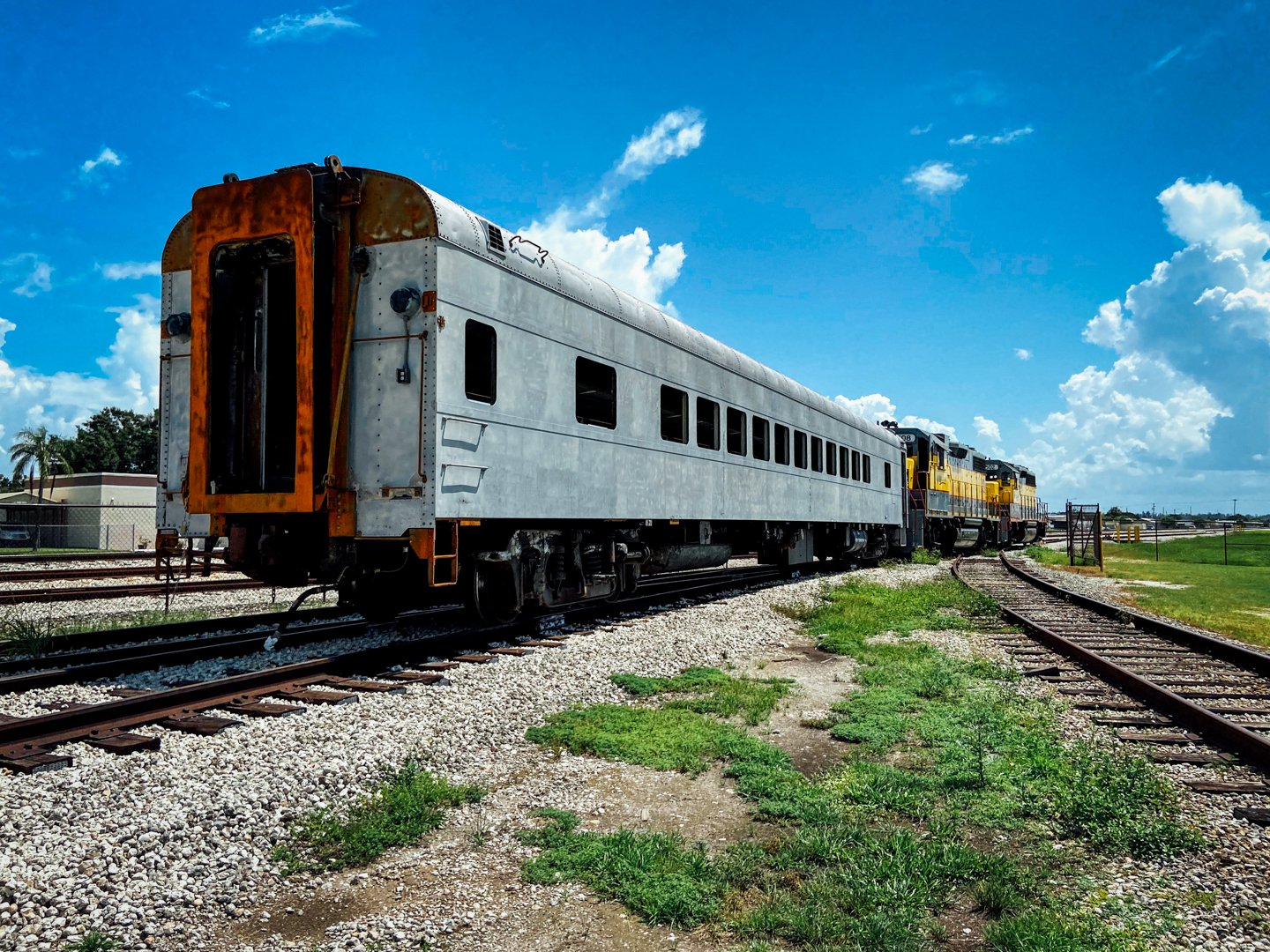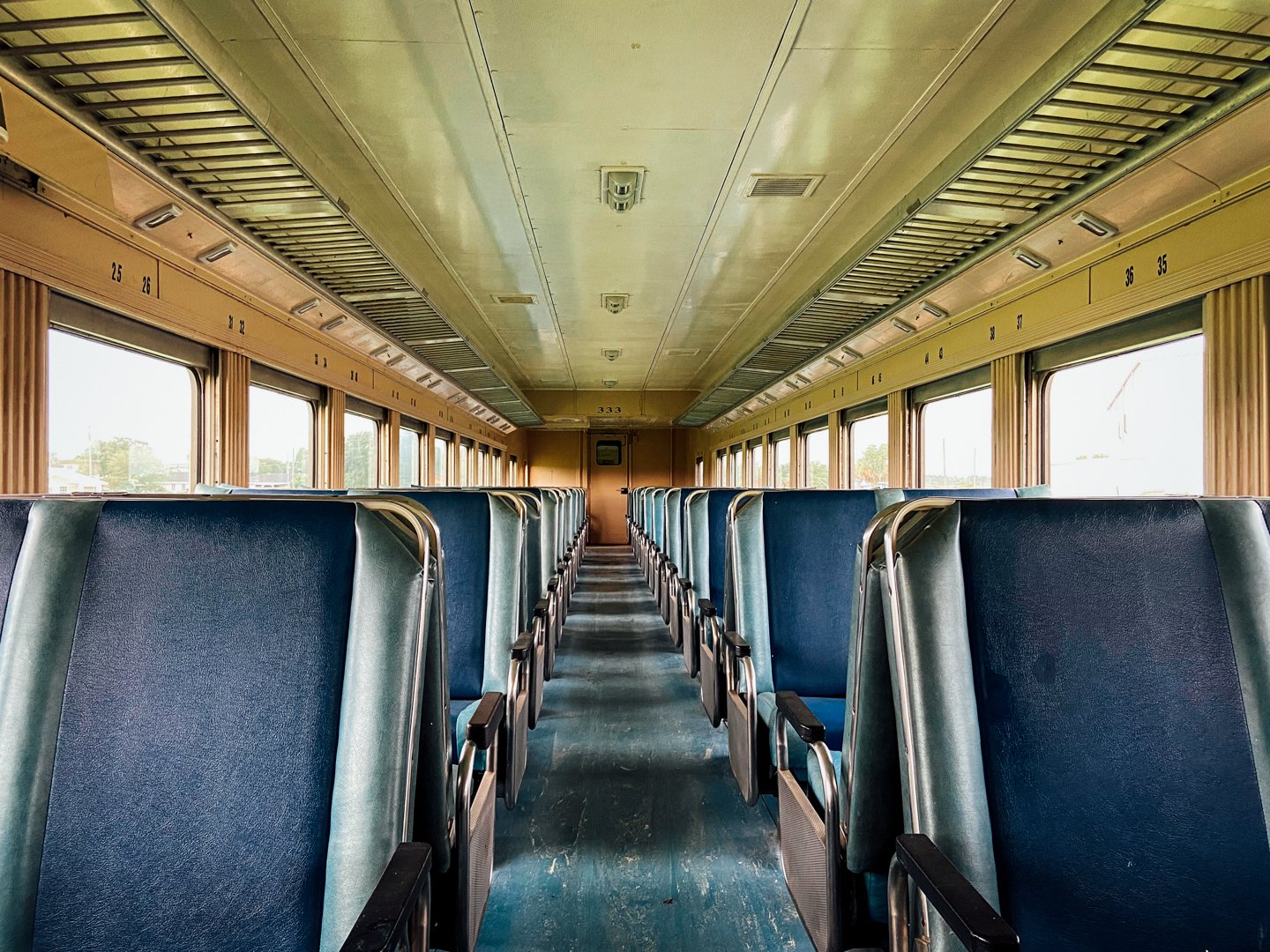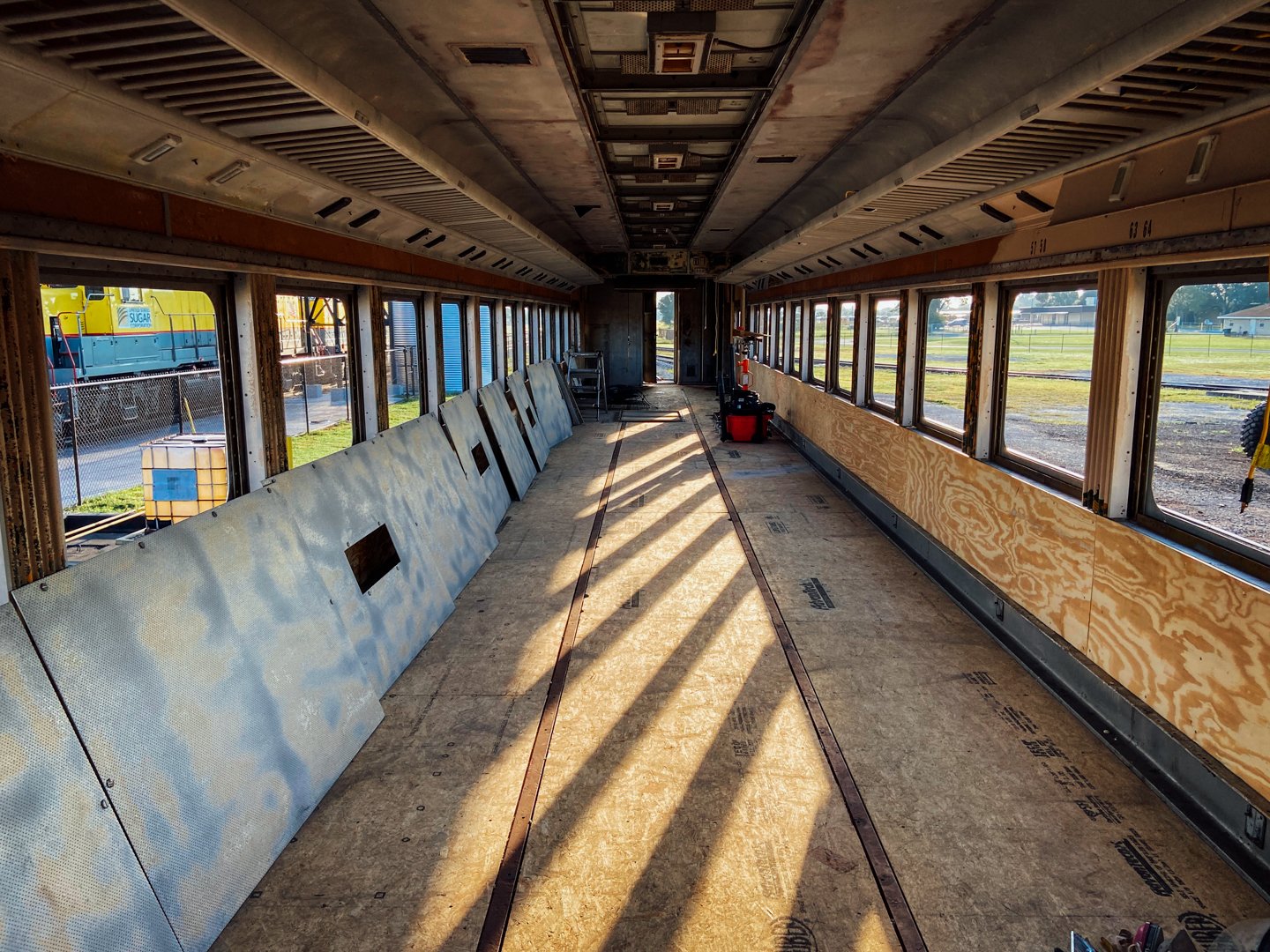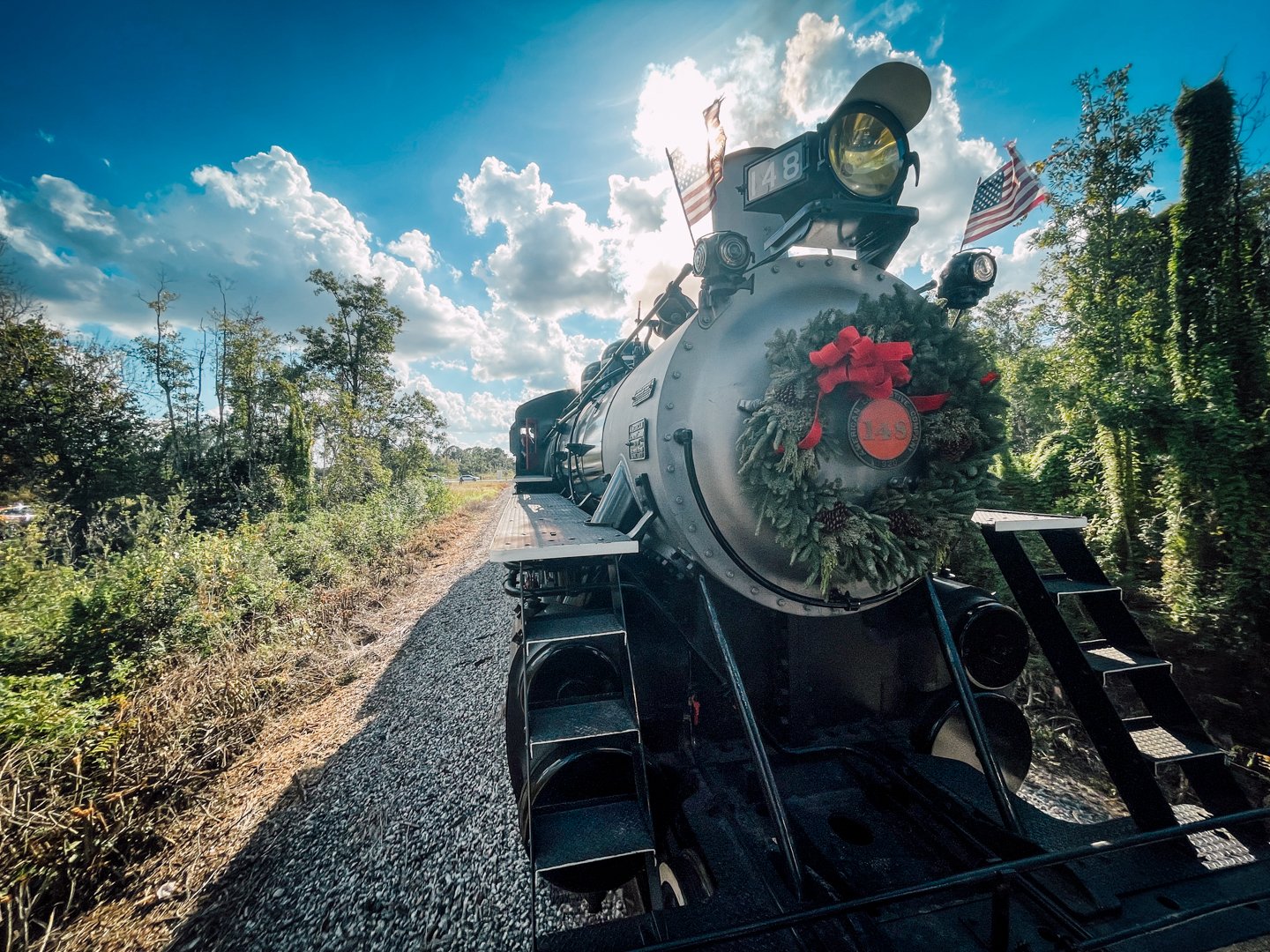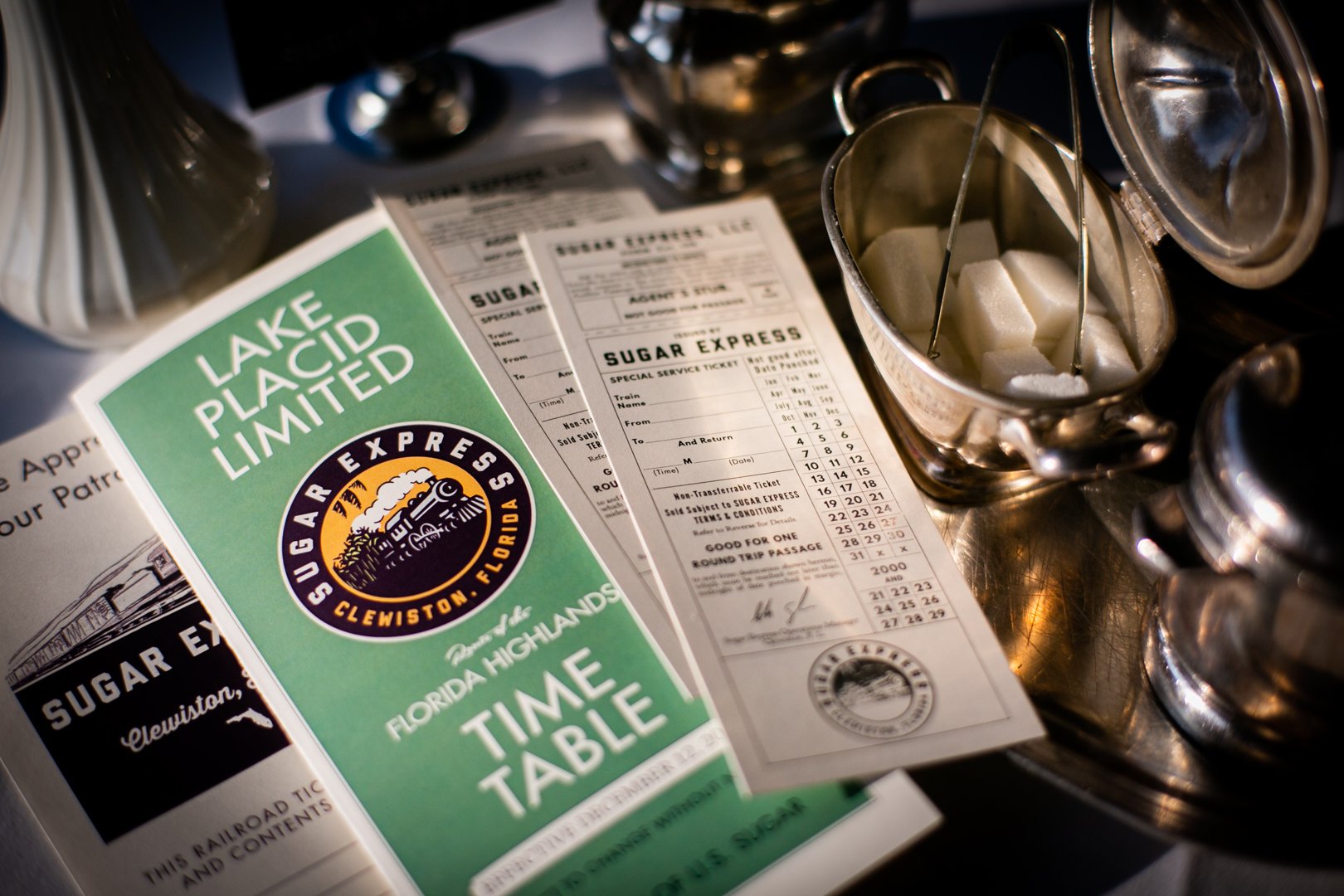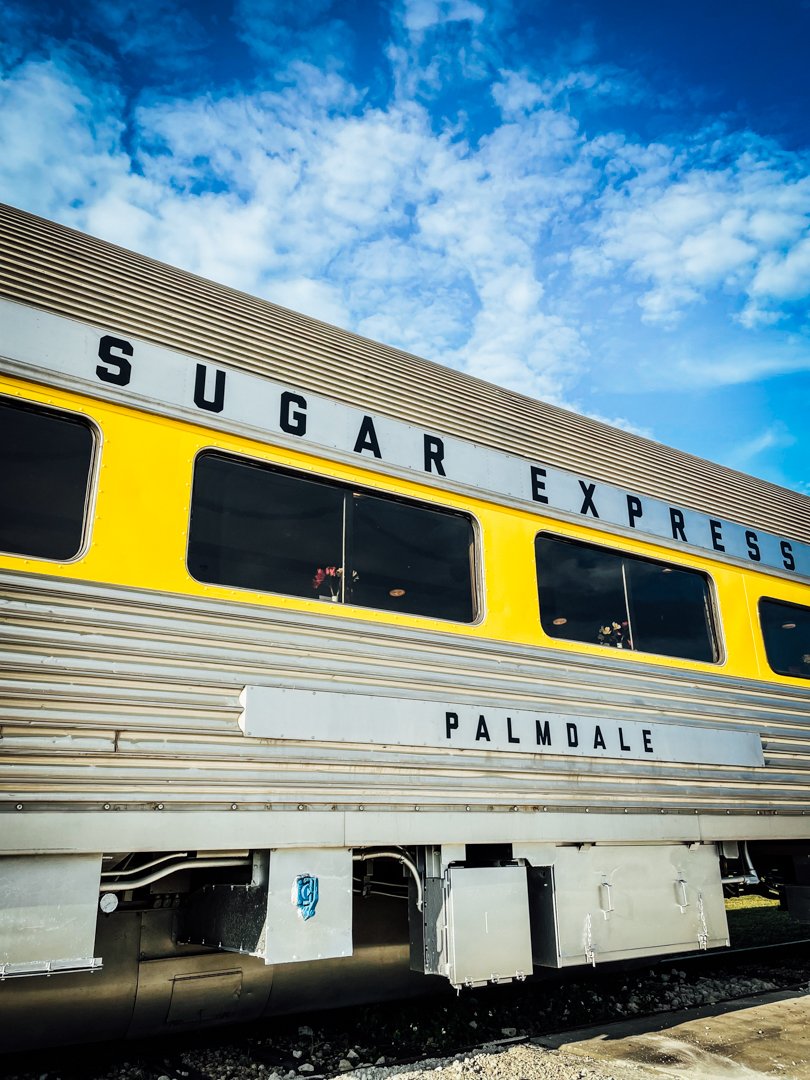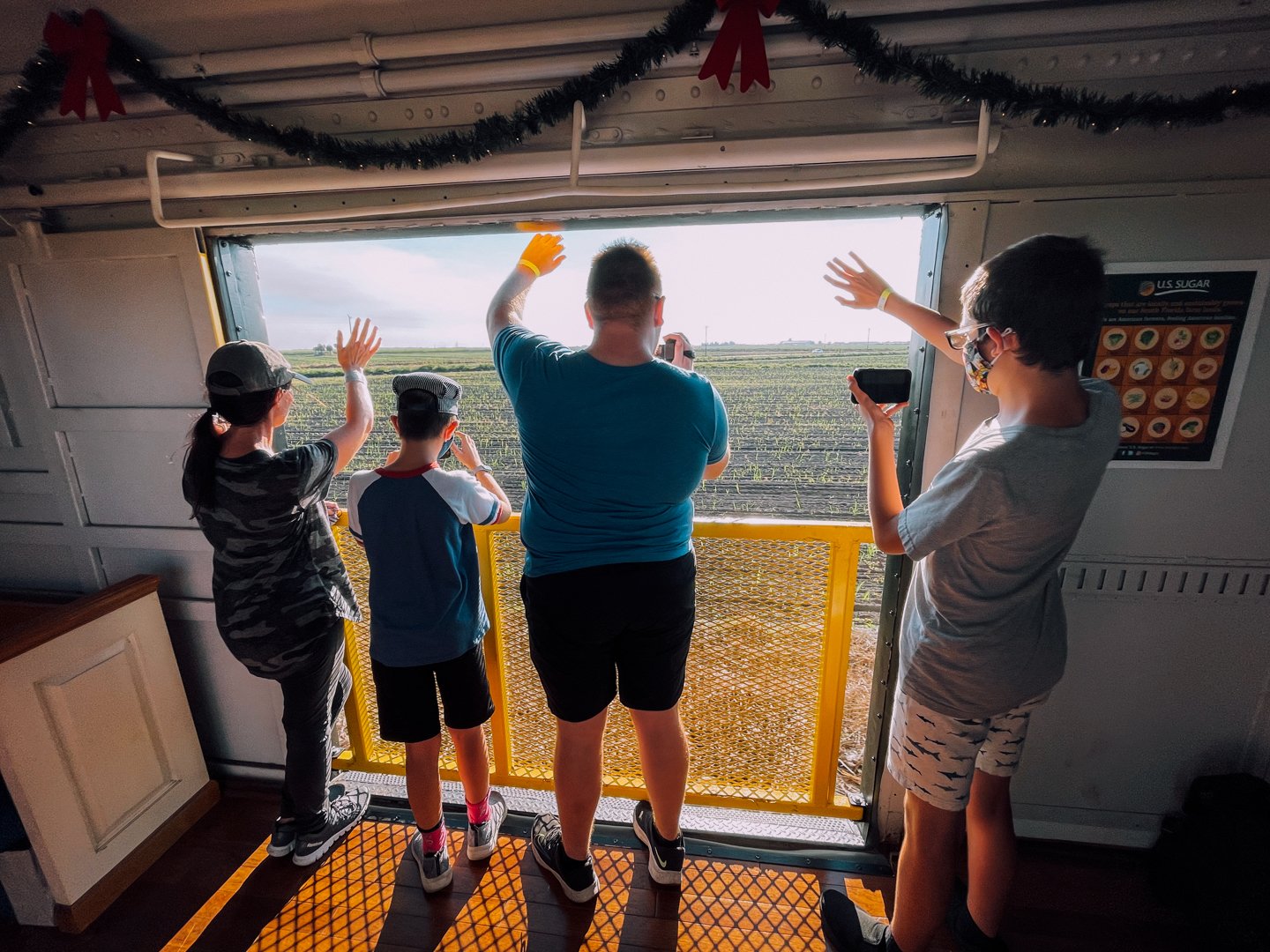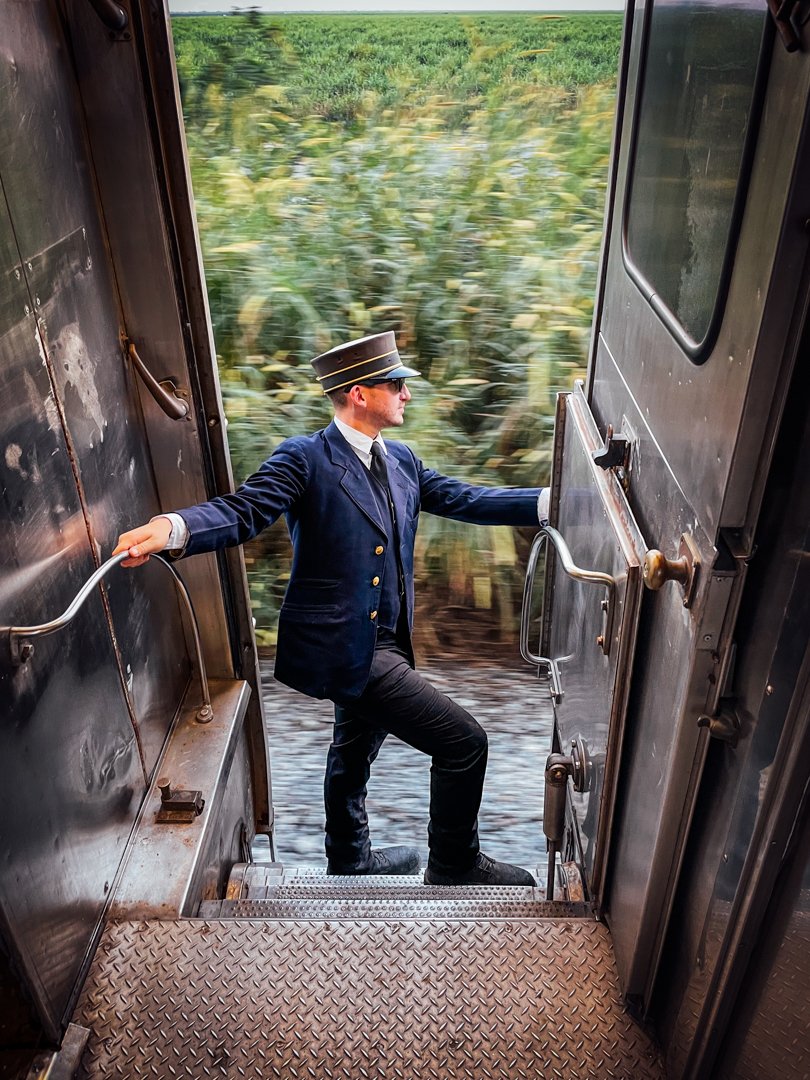Building a First-Class Tourist Train
Restoring, renovating, and rebuilding vintage railroad passenger equipment is the next step for a steam-powered excursion line in Florida. Learn how we helped create a first-class tourist train – and the customer experience to go along with it.
Written By Kelly Lynch, Director of Special Project and Railroad Preservation Consultant
As the restoration of United States Sugar steam locomotive No. 148 crossed the finish line in April of 2020, the conversation immediately pivoted to what the 1920s steam locomotive could pull behind it. While Florida had previously been home to several steam-powered tourist trains operating on the general railroad system, the South Central Florida region hadn’t seen any steam or first-class trains in decades – a far cry from an area that had once hosted the prominent trains of Atlantic Coast Line, Seaboard Air Line Railroad, and Illinois Central.
Operating as the Sugar Express, the steam excursion operation was conceived to welcome passengers on trips through the cane fields and communities of the Lake Okeechobee area throughout the year. This meant that any passenger car acquired, rebuilt, or restored had to not only provide guests with a comfortable and enjoyable trip in accommodations that were complimentary with the heritage of 148 but also withstand Florida summers and extreme weather events.
An obvious first choice was to lease Georgia 300, a privately-owned heavyweight observation car built in 1930 and kept in Orange Park, Florida. A resplendent Pullman Standard car, Georgia is best known for hosting three different United States Presidents on various Whistle Stop tours from 1992-1999 and as a result, carries a Presidential seal on display inside. With comfortable bedrooms, a kitchen, dining room, and lounge, the car was utilized on Sugar Express’ first Toys-for-Tots train in 2020 and is now on lease for the 2022 season. Georgia proudly displays a custom, lighted drumhead with the logo we developed for the operation.
With Georgia as a benchmark for a first-class car, we pivoted to equipment that could supply an abundance of passenger car seats. We approached the United Railway Historical Society of New Jersey (URHS) regarding three high-capacity coaches from the Great Northern and Union Pacific that had been in storage but left in various states of repair by a lessee. Trading off their ability to carry 80 passengers each, the cars were “fixer-uppers” originally built in the 1950s and last saw major work in the 1990s – but it was equipment that we could completely restore to our standards. At present, the cars are being gutted and rebuilt from the frame up, from the trucks to the upholstery, with major work focused on the HVAC and electrical systems.
“These cars were left in a very complicated situation and after so many years, they’ve finally gotten the happy ending they deserve. We’re grateful to have had FMW Solutions and Sugar Express as partners and the funds from this sale have already been contributed to important preservation efforts for us,” said Kevin Phalon, President, URHS. “We look forward to working with FMW on future rail preservation projects in New Jersey.”
There was a lot of discussion amid U.S. Sugar and the Sugar Express on an open-air or open window car – something that would allow passengers to enjoy the Florida weather and connect to the rural countryside, but also take in the sights and sounds of the 148 at speed. Discussions on acquiring traditional observation cars or converting a coach into an open-air car (akin to the Lookout Mountain) ensued.
Ultimately, we decided to follow the practice of other excursion operators and determined a baggage car would fit the bill. As Amtrak had just spun off dozens of cars from its heritage fleet a few years earlier, a former Santa Fe baggage car had made its way to the non-profit Nashville Steam. Now fully restored, the baggage car, now known as the Miami Locks, is on a long-term lease to Sugar Express.
With an open-air baggage car, a beautiful observation car, and three coaches in the mix, the passenger train needed at least one more amenity – a dining or lounge car and Sugar Express Operations Manager Scott Ogle found a good fit: Former Pennslyvania Railroad William Penn. Originally constructed in the early 1950s as a parlor car, Amtrak converted it to a galley/lounge car, and the car was acquired in mid-summer of 2021.
The car was shipped 1,300 miles from St. Louis to Clewiston, Florida, and after some brake and running gear work, and additional adjustments to the generator and the interior, the car was placed into service as the Palmdale.
One of the most visible signs of progress on any passenger car is the paint scheme. One of these coaches, no. 1002, had been named the Lake Okeechobee and was the first car to appear in the new Sugar Express paint scheme.
Over a period of several weeks, we explored several different paint schemes and options for the growing passenger car fleet. Next to the steam engine itself, the appearance of the passenger train was critical, and an opportunity to create a matched train set was not only compelling but historically appropriate.
Internally, early designs explored matching Georgia’s handsome blue and grey appearance, while others contemplated the Atlantic Coast Line’s striking purple or green passenger train looks. Through research, we ultimately felt that Illinois Central’s pre-war City of Miami passenger train paint scheme was one of the most striking – and also complemented the existing palette of colors used on the South Central Sugar Express’ diesel fleet. The City of Miami was fitting –it was once a famous, all-Pullman year-round passenger train that ran through the area.
Using the restored Bamboo Grove (the Miami’s sole surviving observation tavern-lounge-observation car on static display in Ormond Beach, Florida) as a template, and after consulting the Pullman and EMD archives, shades of green, yellow and red were ultimately chosen, making only minor deviations to accommodate the client’s preferences (a shade brighter yellow, a slightly lighter green) and the vendor’s ability to reference the original colors in paint (for the passenger coaches) and vinyl (for the Miami Locks.)
FMW employed the same process used on Brightline’s new passenger trains and determined that a vinyl wrap on a historic passenger car was not only cost-effective but a worthwhile experiment, and while it required additional surface prep work, the results were indistinguishable from the traditional pain used on the other equipment.
Amid this ongoing work, plans to market and operate the first official passenger excursion for the Sugar Express were taking shape. Upon the arrival of the Palmdale and Georgia, and the completion of Miami Locks, we started work on creating the Lake Placid Limited – a first-class, all-day trip from Clewiston to Lake Placid.
The year of work spent building the Sugar Express fleet was not in vain – tickets for the inaugural trip sold out in 14 minutes, and the journey ultimately welcomed passengers from around Florida and six different states.
To round out the experience, we designed historically inspired tickets and a timetable for passenger souvenirs, hired a local caterer to produce a bountiful breakfast buffet, and our onboard train crew wore appropriate period uniforms. To quote one passenger, “when we were greeted at the door by a fully uniformed conductor in 87 degrees, we were impressed. We knew we were in for a treat.”
“Each one of these passenger cars came to us at different stages of mechanical usefulness, and different challenges as a result. It’s been gratifying to work side by side with Sugar Express and Scott Ogle. We learned the ins and outs of these together and came up with practical, affordable solutions, that will support the passenger experience onboard these trains,” explained Drew Reynolds, Project Manager for FMW Solutions, who manages the fleet for Sugar Express. “A customer’s experience can be marred by the presentation of a train, not to mention any number of mechanical issues. We want our clients and their guests to have the best experience possible, even if components of the train set are 50 or 100 years old.”
For guidance or help on your railroad passenger car restoration or rebuild project, or to request a proposal or quote, visit fmwsolutions.com, email info@fwmsolutions.com, or call (423) 425-9753.
FMW Solutions and its affiliate National Rail Consulting Group offer a suite of professional services for the railroad industry, including mechanical and engineering design, diesel locomotive servicing and repair, rail operations, strategic planning support, marketing, public relations, safety compliance administration, training, and alternative fuel technology research and development. FMW is also an accomplished rail preservation resource, with expertise in the restoration and operation of historic equipment.



